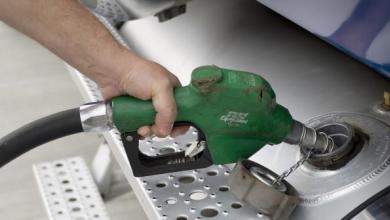
Four States Raise or Reform Gas and Diesel Taxes in 2019 with More Increases Coming
posted in Alerts by Brian Gray
Four States Raise or Reform Gas and Diesel Taxes in 2019 with More Increases Coming
As of July 1, Illinois is the 4th state to raise or reform their gas tax this year and became the 31st state to do so this decade in order to channel more revenue to maintaining transportation and funding construction projects.
According to ITEP, these actions are helping reverse losses in gas tax purchasing power caused by rising construction costs and improvements in vehicle fuel efficiency, as well as looking to the future. Eight states have abandoned flat cent-per-gallon taxes since 2013 in favor of variable-rate gas tax under which the tax rate tends to rise over time.
What Changed in 2019 and What Down The Future Hold?
- Alabama: The first stage of a 10-cent increase will take effect on Sep. 1, 2019, when the gas tax rate rises by 6 cents. Additional 2-cent increases will occur on Oct. 1, 2020, and Oct. 1, 2021. Beginning in 2023, Alabama will implement a variable-rate formula under which the tax rate will rise alongside increases in the cost of highway construction.
- Arkansas: A new tax equal to 1.6 percent of the average wholesale price of fuel will take effect on Oct. 1, 2019.
- Illinois: The gas tax will rise by 19 cents and the diesel tax by 24 cents on July 1, 2019. Looking ahead, the gas tax rate will also be indexed to inflation so that the tax can retain its purchasing power with small, periodic increases in the years to come.
- Ohio: A 10.5-cent gas tax and 19-cent diesel tax increase will take effect on July 1, 2019. Gov. Mike DeWine also proposed indexing the state’s gas tax rate to inflation, but this reform was not included in the final bill.
- Indiana: A 10-cent increase took effect on July 1, 2017. Further adjustments will occur between 2018 and 2024 based on a new formula that considers both inflation and the rate of growth in Indiana’s personal income. The new law also shifts the portion of sales tax revenue collected on gasoline purchases out of the general fund and toward transportation instead.
- Montana: A 6-cent gas tax increase and 2-cent diesel tax increase will be gradually phased-in, with the final stage taking effect on July 1, 2022.
- Oregon: A 10-cent increase will take effect in four stages, starting with a 4-cent increase that took place on Jan. 1, 2018, and ending with a 2-cent increase on Jan. 1, 2024.
- South Carolina: The legislature overrode Gov. Henry McMaster’s veto to enact a 12-cent-per- gallon increase in the tax rate on both gasoline and diesel. The increase is being phased in over 6 years, with 2-cent increases taking effect each July 1 between 2017 and 2022.
- Utah: A new law modifies the variable-rate gas tax formula enacted by Utah lawmakers in 2015 in a way that will allow for somewhat more robust revenue growth. The new formula resulted in a 0.6-cent-per-gallon tax increase in 2019 and will likely trigger a 1.2-cent increase in 2020.
- Georgia: A 6.7-cent increase took effect July 1, 2015. A new formula for calculating the state’s tax rate allows for future rate increases alongside improvements in average vehicle fuel-efficiency. This will allow the tax to retain its purchasing power in the years ahead. The new formula resulted in a 0.3-cent increase on Jan. 1, 2017, a 0.5-cent increase on Jan. 1, 2018. And a 0.7-cent increase on Jan. 1, 2019.
- Nebraska: A 6-cent increase was enacted over Gov. Pete Ricketts’ veto. Nebraska’s gas tax rate rose in 1.5 cent increments over four years. The final stage of this increase was implemented on Jan. 1, 2019.
- North Carolina: Falling gas prices were expected to trigger a gas tax cut of 7.9 cents per gallon, but lawmakers scaled that cut down to just 3.5 cents, resulting in a 4.4-cent increase relative to previous law. Additionally, a reformed gas tax formula that takes population and energy prices into account will bring further gas tax increases in the years ahead. The first of those increases (0.3 cents) took effect on Jan. 1, 2017, the second (0.8 cents) took effect on Jan. 1, 2018, and the third (0.8 cents) took effect on Jan. 1, 2019.
Fuel And Mileage Tax Reporting
When dealing with taxation authorities, accuracy and record keeping is essential. Glostone Trucking Solutions collects, double checks, interprets, files and stores both paper and e-trip data to ensure every client pays the right amount, to the right place, on time, every time.
Our technology, expertise and workflow process allows us to work with GPS data and fuel down loads, paper trip records and paper fuel receipts, or a combination of both. We guarantee our work!






